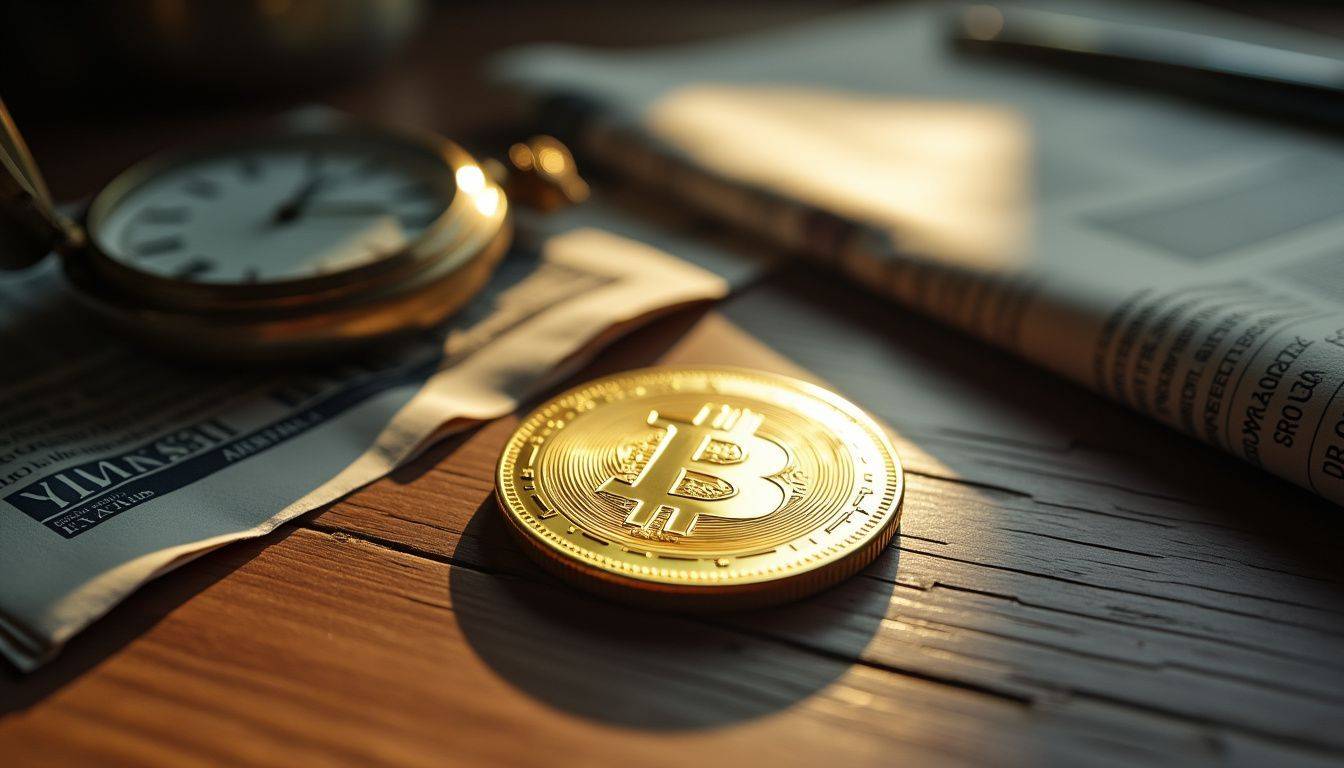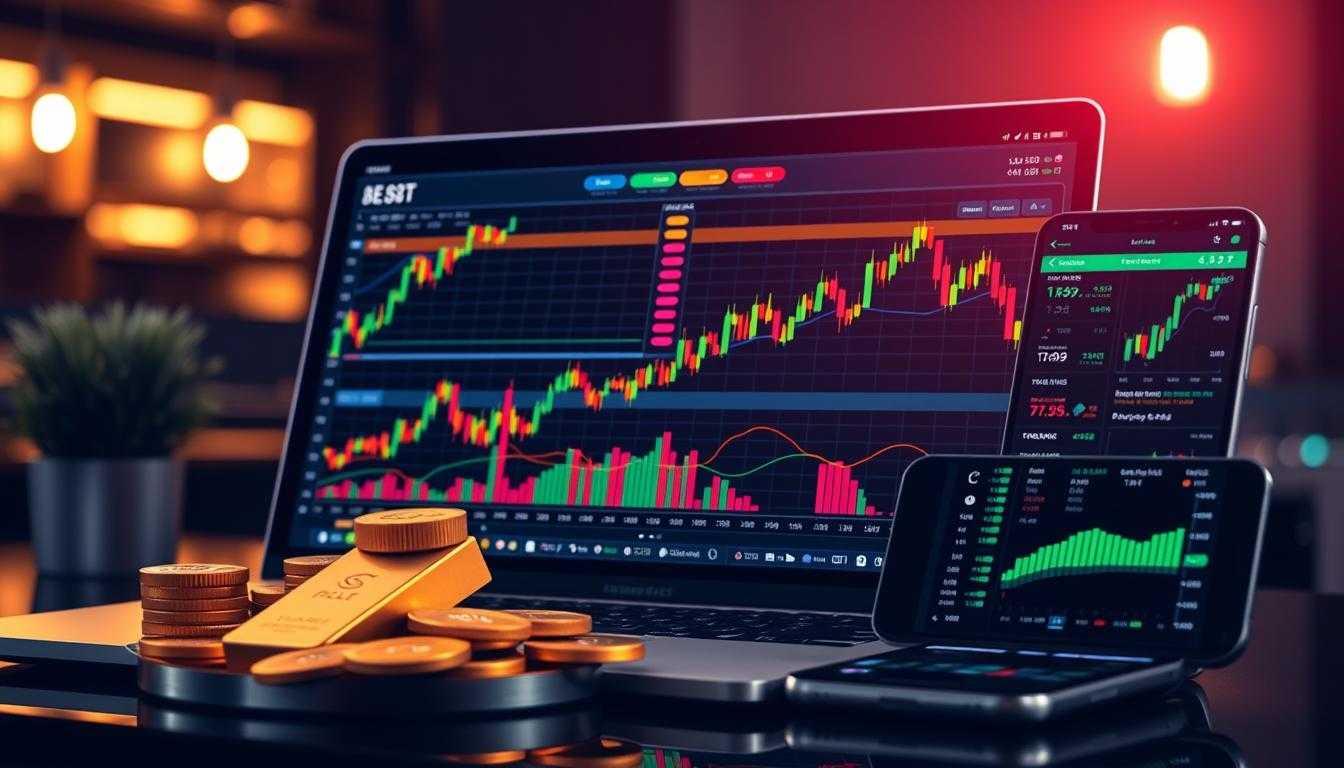Have you ever thought about growing your money with gold? Many people look for ways to make their savings bigger, but they’re not sure how. Here’s a fact: the price of gold changes every day.
This can be good news for your wallet if you know what to do.
Our blog post is going to show you how. We’ll talk about why gold prices go up and down and how this can help your investments grow. You’ll learn about different ways to invest in gold, like coins or funds that track the price of gold.
Plus, we will give tips on when might be a smart time to buy or sell. Ready to learn more? Keep reading!
Current Trends in Gold Prices

Gold prices are on a wild ride, folks. Big moves from central banks and worries about conflicts around the world keep pushing those numbers up and down.
Influences of Central Banks
Central banks significantly influence gold prices through their control over monetary policies and gold reserves. This relationship can be visualized like operating a car, where central banks control both the steering wheel and pedals.
Immediate reactions in gold prices are seen when they alter interest rates or determine inflation goals.
The behaviors of central banks about interest rates and inflation goals are directly connected to current movements in gold prices.
By carefully observing these influential entities, savvy investors can make more informed decisions. For instance, a central bank’s decision to increase interest rates may deter some from acquiring more gold.
The key is maintaining astuteness and staying updated with expert advice pertaining to the daily dynamics of these decisions in the market.
Impact of Geopolitical Tensions
Geopolitical tensions make gold shine brighter. Think of gold as a safe place during a storm. When countries argue or fight, people worry about their money. They move it to gold. This makes the price go up.
If you watch the news and see trouble around the world, expect more folks to buy gold.
Experts say watching these tensions helps traders guess where gold prices will go next. Each day, changes in who is fighting whom can push prices up or down. Smart traders use this info to decide when to buy or sell their safe-haven asset: gold.
Investing in Gold as an Inflation Hedge
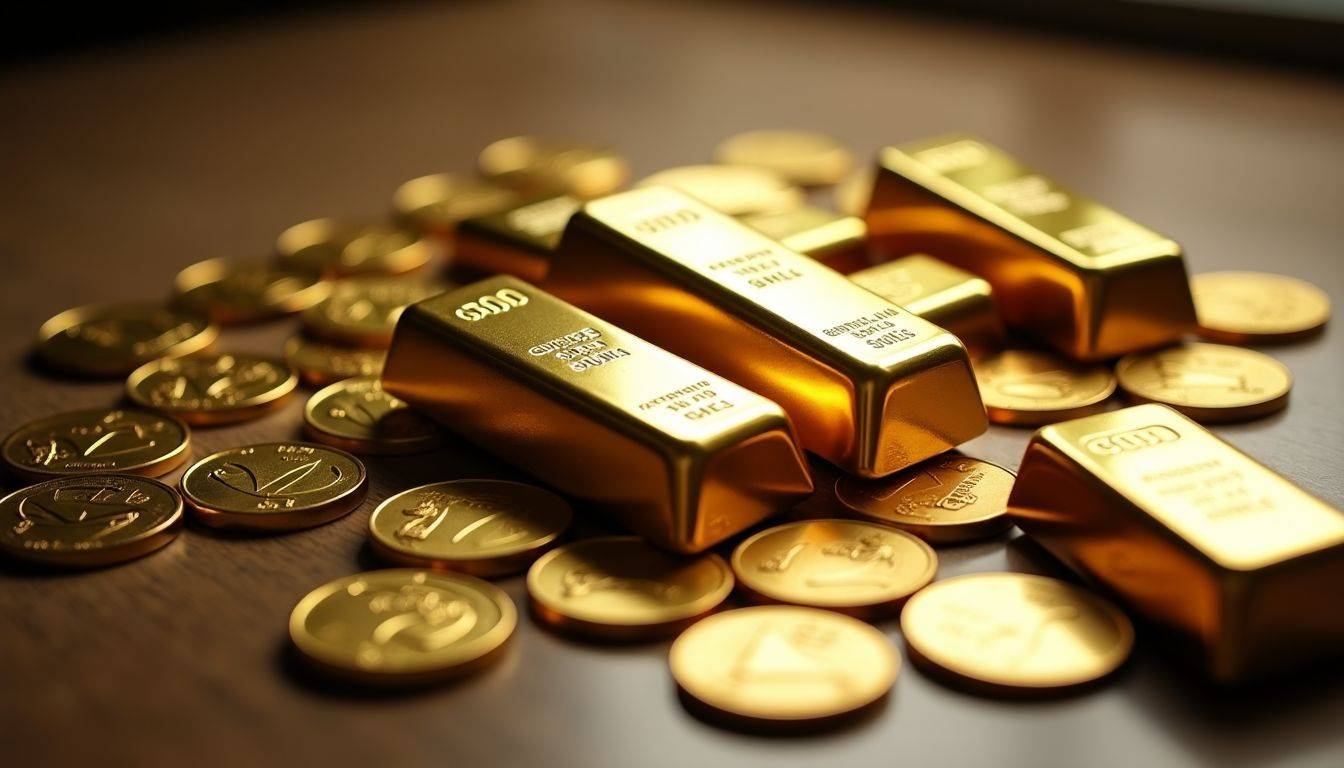
Gold shines when money loses value. This precious metal can be a safe place for your cash during tough times with rising prices.
Role of Gold in Diversifying Portfolios
Adding gold to your mix of investments keeps things varied. It’s like not putting all your eggs in one basket. See, markets can go up and down. Stocks, bonds, and cash might lose value if the economy is doing poorly or if prices shoot up.
But gold often moves the other way – when others fall, it may climb or hold steady. This makes your investment group safer.
Gold acts as a safety net against inflation too. When prices for stuff you buy every day go up, gold usually does too. This helps protect how much your savings can buy in the future compared to stocks or bonds that might not do so well with rising prices.
Next up: How different ways of investing in gold stack up against each other.
Comparisons with Other Asset Classes
So, we’ve talked a lot about how gold can make your portfolio stand out. Now, let’s switch gears and see how gold stacks up against other assets. It’s like comparing apples and oranges, but oh so important if you want to make smart money moves.
Here’s a simple table to break it down for you:
| Asset Class | Pros | Cons |
|---|---|---|
| Gold | Safe during hard times, keeps up with inflation. | Doesn’t earn like stocks or real estate. |
| Forex (Currency Trading) | Open 24/7, high liquidity. | Very risky, rates change fast. |
| Oil | Big gains when prices go up. | Super volatile, can lose a lot when prices drop. |
| Indices (Stock Market Indexes) | Easy to diversify, steady growth. | Can plummet during economic downturns. |
| Bitcoin | High reward potential, new opportunities. | Very new and unpredictable, huge price swings. |
So, what do we see here? Well, gold is like your reliable friend. Always there, not too flashy but steady. Forex is more of a wild ride, open all the time and can swing either way hard. Oil? Think of it as that friend who can either make your day or break your bank, depending on the world’s mood. Indices are your steady pals, growing over time but not without their bad days. And Bitcoin is the new kid on the block, exciting but oh boy, unpredictable.
Each asset class has its charm, but it’s clear gold is in a league of its own for those looking for a safety net in shaky times. Sure, it might not have the high-flying potential of Bitcoin or the adrenaline rush of Forex, but it’s a marathon runner in a world of sprinters. Gold is about keeping what you’ve got and maybe gaining a bit more on top, especially when everything else seems up in the air.
Gold Investment Options

So, you’re thinking about putting some cash into gold? Smart move. Let’s talk about ways to do that. You can go the classic route with bars or coins—yeah, like pirates. Or, maybe try something more modern with Gold ETFs or even a Gold IRA for your golden years.
It’s all about finding what fits best in your treasure chest of investments.
Gold Bullion and CoinsGold bullion and coins offer a hands-on way to invest in gold. People buy them to keep value as the dollar changes. These pieces are like money that doesn’t lose worth over time. They’re easy to sell, making them a top pick for investors looking for safety.
Holding gold in your hand gives you a sense of security that paper money can’t match.
Trading these items is popular because it’s straightforward. You buy at one price and hope to sell when the price goes up. The London Bullion Market Association (LBMA) sets standards, ensuring what you get is good quality.
This makes trading fair and safe across countries.
Gold ETFs (Exchange-Traded Funds)
Gold ETFs are like a magic window for investors. They let you invest in gold without needing to keep the shiny stuff at home. Think of it as buying a piece of paper that says, “I own some gold,” but you don’t have to worry about where to put it.
These funds try hard to follow gold prices closely. This means if gold’s price goes up or down, your investment does too.
These funds are easy to buy and sell, kind of like how you’d trade stocks. That makes them pretty handy when you need money quickly or want to jump on a good deal fast. Plus, they’re a smart way to protect yourself against inflation and changes in money value around the world.
To get the most out of Gold ETFs, keeping an eye on daily gold rates is key – it sharpens your trading game by miles!
Gold IRAs (Individual Retirement Accounts)
A Gold IRA lets you save for retirement by investing in physical gold. It’s a special account that offers tax benefits. This means the IRS allows you to keep more of your money, as long as it stays in the account.
Right now, how much gold is worth can change how well your Gold IRA does. Experts say keeping an eye on these changes helps people make smarter choices about their gold investments.
Daily updates on the price of gold help investors decide when to buy or sell. Tools like blogs and videos give useful tips on managing a Gold IRA better. For anyone looking to grow their savings with less risk from market ups and downs, adding gold to their retirement plan makes sense.
Watching how much gold is worth closely can guide investors to adjust their strategies for better results.
Analyzing Gold Rate Fluctuations
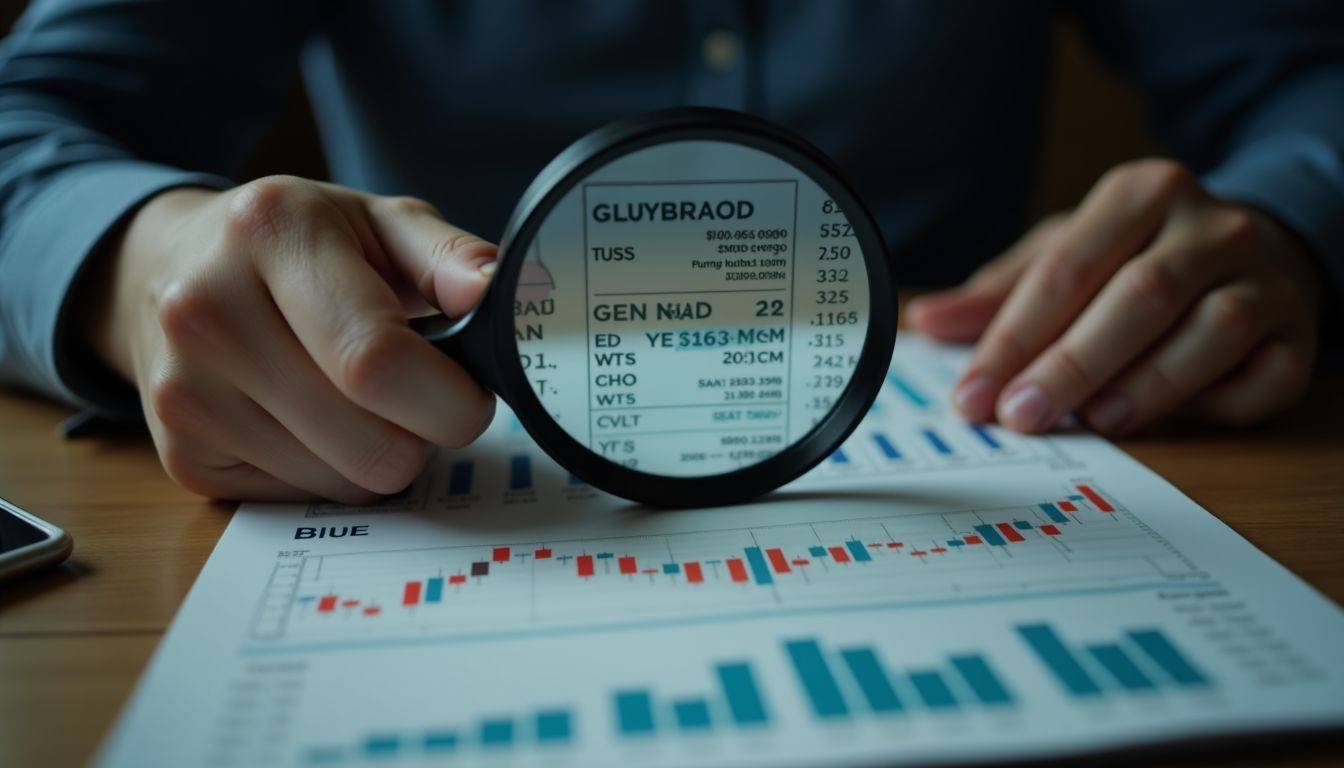
So, you’re curious why gold prices jump around like a cat on a hot tin roof? It’s all about supply and demand, currency changes, and those big decisions from central banks. Think of it as trying to solve a puzzle where the pieces keep changing shapes.
Factors Affecting Daily Gold Rates
Every day, gold prices move up and down. A big reason is supply and demand. When more people want gold, the price goes up. If lots of it is for sale but not many want it, the price falls.
Central banks play a huge role too. They hold large amounts of gold. When they buy or sell, it impacts the market big time.
Another factor is inflation rates; when they rise, gold often becomes more popular as a safe place to put money. Also, changes in U.S dollar strength affect gold rates because gold gets pricier for other countries if the dollar strengthens.
Lastly, global events like wars or elections can make investors rush to or away from gold as they look for safer investments or take on more risk.
How Exchange Rates and Inflation Impact Gold Prices
Exchange rates and inflation are like the two big bullies on the playground for gold prices. If the value of the U.S. dollar goes down, gold prices usually go up. It’s because investors see gold as a safe place to park their money when currencies aren’t doing so hot.
This dance between currencies and gold is something traders keep a sharp eye on. And then there’s inflation – the sneak thief that robs your money of its buying power over time. As inflation rises, so does the appeal of gold.
People run to it, hoping to protect their cash from losing value.
Gold acts as a sort of financial superhero here, stepping in when things get shaky with economies around the world or when prices start climbing too fast for comfort. You’ll often find analysts talking about monetary policy or economic indicators—yeah, those can be snooze-fests but they’re crucial for understanding why and how these changes happen.
In times of uncertainty, gold has been a steady hand guiding investors through rough waters.
Moving forward to look at how all this plays into market performance…
The Connection Between Gold Prices & Financial Market Performance

Gold prices and the market go hand in hand, much like peanut butter and jelly. Think of gold as a mood ring for the financial world. If stocks are down or there’s big trouble in oil or Forex markets, investors run to gold.
It’s their safe place. This makes gold prices jump up. On good days, when stocks or other assets do well, gold might not shine as bright because fewer people feel they need it.
With every twist and turn in global events—be it a central bank move or just rumors of inflation—gold reacts. For traders and inventors peeking into the daily dance of numbers, keeping an eye on gold can be like having a crystal ball.
It tells you not just about now but also hints at what’s coming next in equities, commodities, and even national currencies across this big stage we call the financial market.
Strategic Investment Tips
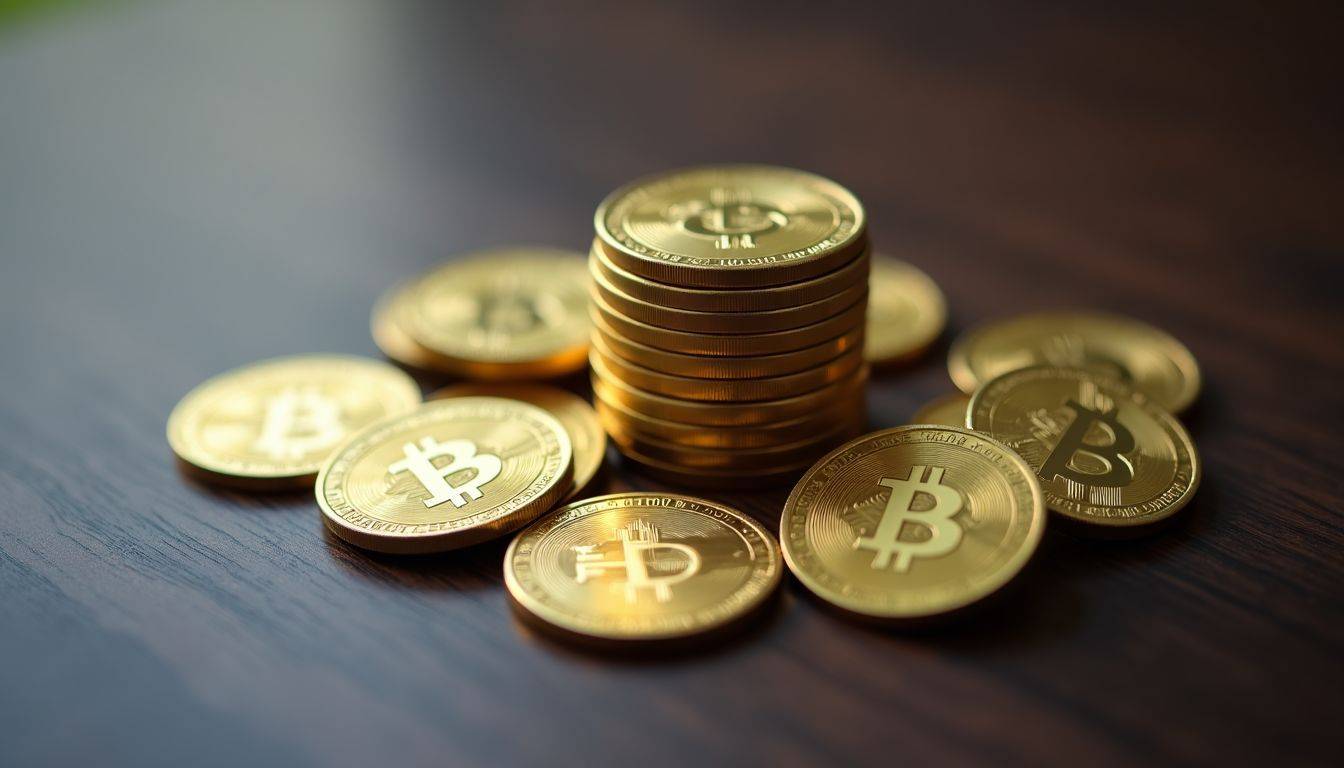
In the sphere of gold investment, your timing is an invaluable ally. Sure, discerning the perfect moment to make your move might feel akin to catching a falling knife—a tad intimidating, isn’t it? But, worry not, because as you gain more knowledge about market analysis, you’ll begin to identify patterns that can guide those decisions.
Investing in gold should be seen as more than merely placing your assets into something attractive, but rather as an active monitoring and adjustment process based on the financial climate. Long or short investment strategies? The choice depends on your goal: immediate profit or the enduring accumulation of wealth.
Now, wouldn’t it be beneficial if there were more insights to help you avoid obstacles in these unpredictable markets? Well, guess what… Continue reading!
Timing Your Investments Based on Market Analysis
Looking at the market can tell you the best times to buy or sell gold. Experts use daily updates from markets like Forex and commodities to make smart choices. They check out how much demand there is for jewelry, what big banks are doing, and any news that could change gold prices.
This helps them catch good chances to make money.
To do well, follow tips from those who know a lot about buying gold. They watch for signs of inflation or big moves in currency values to guess where gold prices might go next. Using tools like ETFs (funds that track the price of gold) can help spread out your risks and possibly lead to better growth over time.
Long-term vs. Short-term Gold Investment Strategies
Choosing between long-term and short-term gold investment strategies is like picking a path. For the long haul, think about gold bars or coins. These shine when you hold onto them for years.
They’re solid, just sitting in your portfolio, keeping their value as everything else changes. This strategy works best if you’re not looking to make quick cash but want something safe.
On the flip side, if making money fast sounds good, eye those gold exchange-traded funds (ETFs). They are easy to trade, much like stocks. This means you can buy and sell quickly based on daily price changes.
It’s more thrilling but comes with higher risk. So, whether it’s ETFs for a sprint or bullion for a marathon – your choice depends on how fast you want to reach your financial goals.
Conclusion

Gold prices move every day. Central banks, geopolitical tensions, and inflation change these prices. People add gold to their savings to protect their money. They choose different ways to invest in gold like bars, coins, or funds.
Knowing about gold rates helps make smart choices for your money.
Gold makes a safe place for your cash in hard times. It stands strong against other investments when prices go up too much. You can pick from holding actual gold or owning parts of it through funds and accounts that save for later years.
Understanding why gold rates change is key to using it well for growth. Things like the value of dollars and how much things cost play big roles. When you watch these factors, you can act at the right time.
Using what experts say will guide you better in making choices with your investments in metals like gold. Their daily updates give fresh insights into turning your cash into more wealth over time.
So keep an eye on today’s rate of this shiny metal—your future self might thank you!
FAQs
1. What’s the big deal about gold as an investment?
Gold, my friend, is a “safe haven” and a store of value. It’s like that trusty umbrella you carry around for those unexpected rainy days. When financial risks are high or there’s runaway inflation, gold can help protect your hard-earned money.
2. How does the current gold rate affect my investment portfolio?
Well, think of it this way: if you’ve got some gold coins tucked away in your portfolio or perhaps invested in miners who do all the hard work of gold mining… when the spot price (that’s today’s selling price) goes up – bingo! Your stake just grew!
3. Can I earn dividends from investing in gold?
Not directly buddy! Gold itself doesn’t give out dividend income like stocks might after mergers and acquisitions or consolidation… But hey, it diversifies your investments and hedges against macroeconomic shifts – pretty neat huh?
4. How does buying physical gold compare to futures contracts on commodity exchange?
That depends on what floats your boat! Buying physical stuff like bullion bars or quarter sovereigns from places like The Royal Mint means owning real assets but remember capital gains tax applies if you sell at profit later on… On flip side, futures contracts let you bet on future prices without actually holding any shiny metal yourself.
5. Does currency value impact my earnings from Gold Investment?
Absolutely! You see when U.S dollars strengthen against other currencies such as pound; investors often rush towards securities backed by USD causing downward pressure on commodities including our golden hero here.
6. Are there any risks involved with leveraging in Gold Investment?
Sure thing! Leveraging means borrowing money to invest more… kind of like getting a mortgage to buy a bigger house than you could afford outright – risky business indeed especially during inflationary pressures!

